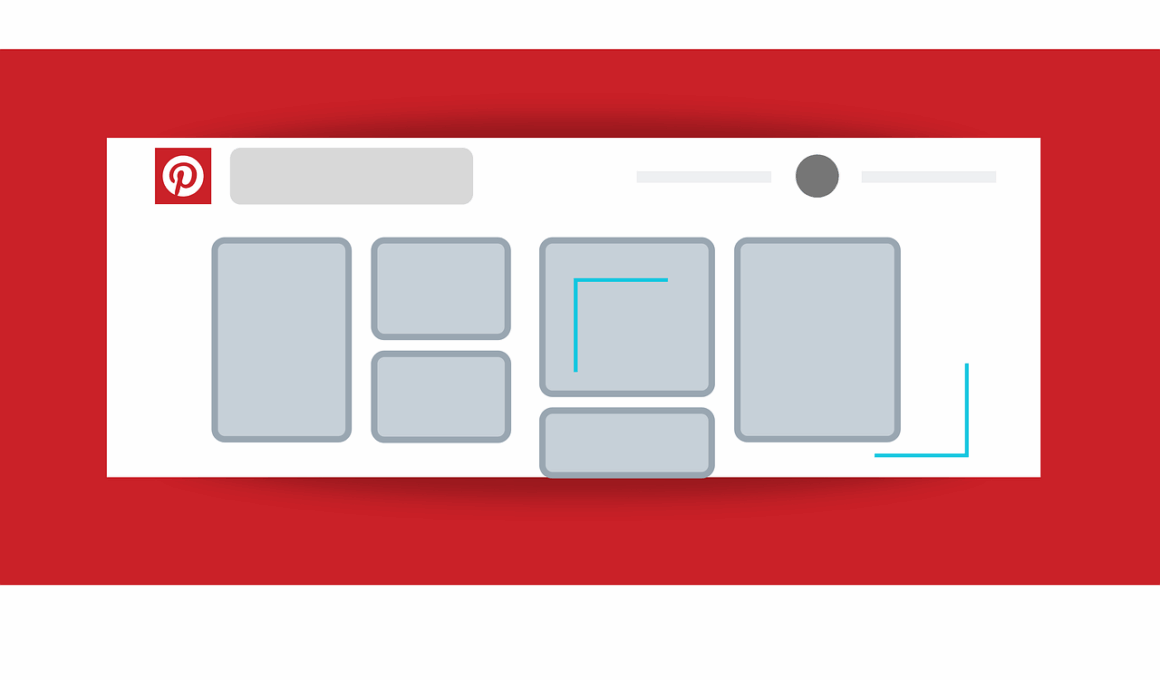Pinterest Content Planning: Scheduling Pins for Maximum Impact
Pinterest marketing is an essential tool for driving traffic and engagement. Understanding how to plan content effectively on Pinterest allows businesses to take advantage of this powerful platform. The first step in the scheduling process involves audience analysis. Identifying your target audience enables you to align your content with their interests and preferences. Secondly, research what type of content resonates best with your audience. This includes identifying popular keywords, trending topics, and relevant categories within your niche. Utilizing Pinterest’s trends and analytics can significantly inform your scheduling strategy. It is also crucial to maintain a consistent posting schedule. Regularly scheduling pins ensures your content is visible to users at optimal times, increasing the likelihood of engagement. You can utilize tools like Tailwind or Buffer for scheduling and tracking the performance of your pins. Experimenting with different post timings can further optimize your reach. Moreover, creating visually appealing and valuable content will encourage re-pins and save by users. Always ensure your pins redirect to high-quality landing pages that provide valuable information to your visitors. It is this combination that ultimately drives traffic and sales.
After acquiring insights from audience research, the next part of effective Pinterest content planning is creating a visual content strategy. This involves designing visually appealing pins that capture attention and convey the intended message. Consider using high-quality images that accurately represent your brand and product offerings. In addition, maintain a consistent style and branding across all your pins. Utilizing tools like Canva can assist in creating stunning graphics that are suitable for Pinterest. Infographics are particularly effective on this platform and can showcase information engagingly. Additionally, don’t forget to incorporate text overlays to provide context or key messages directly on the images. This assists in drawing users’ attention as they scroll through their feed. Craft strong descriptions filled with relevant keywords to enhance discoverability in Pinterest searches. Use appropriate hashtags to increase visibility and ensure your pins reach a broader audience. Lastly, implement a diverse mix of content types within your pin schedule. This can include product showcases, instructional guides, or inspirational quotes to cater to various audience interests. By maintaining variety, you keep your audience engaged, encouraging them to save and interact with your content more often.
Utilizing Pinterest Analytics
Another significant aspect to consider in Pinterest content planning is analyzing user engagement through Pinterest Analytics. This powerful tool enables marketers to understand how their content performs over time. By observing metrics such as impressions, engagements, and clicks, you can identify which pins are resonating well with your audience. Focus on the pins that garner the highest engagement rates, as these can offer insights into what types of content to create in the future. Additionally, analyze the demographics of your audience to refine targeting further. Understanding where your audience comes from and their interests enables you to tailor future content to meet their needs more effectively. Regularly reviewing your Pinterest Analytics helps you adjust your content strategy and scheduling efforts based on real performance data. Adjust the time slots in which you post pins according to when your audience is most active. Remember to keep an eye on trends in your niche as these can shift over time. Utilize these insights to stay relevant and keep your content fresh for your followers. Engaging consistently with your audience will result in higher trust and loyalty to your brand.
To enhance your Pinterest marketing strategy further, it’s essential to incorporate seasonal content into your scheduling. Pinning content tied to holidays or specific events can elevate visibility significantly. People often use Pinterest for inspiration during particular times of the year, making it the ideal opportunity to attract new followers. Planning seasonal content ahead of time allows you to leverage these peaks in interest effectively. Create a content calendar that outlines scheduling needs over time, marking critical dates that align with important seasons for your audience. For example, if your business revolves around home decor, spring prompts might include garden planning and outdoor renovations. Utilizing themed boards can also enhance your overall Pinterest presence. Segment your content around different themes to help organize your pins by category. This not only improves navigation for your users but also helps them find what they are looking for more seamlessly. Regularly update these boards before important seasons to keep them fresh and relevant. Remember, visually appealing seasonal images can attract the right audience to your profile, leading to increased engagement.
Engagement Strategies for Your Content
Another critical component of successful Pinterest pin scheduling is actively engaging with users. Engagement goes beyond just posting pins; it also encompasses interaction with other users’ content. Re-pinning relevant content from other creators can build relationships and increase your brand visibility. Following users and influencing their niche creates a community around your brand. Also, leaving thoughtful comments on popular pins can attract others to your profile. Engage with your audience through Pinterest’s native features, such as polls or story pins, to keep them connected and informed about your latest offerings. Encourage followers to share their projects linked to your pins, fostering a sense of community. Additionally, collaborating with influencers can amplify your reach as they usually have established audiences. Find influencers who align with your brand values and engage them in co-branding opportunities. This could involve sharing each other’s pins or creating collaborative boards. Timing matters—share collaborative content during peak Pinterest activity hours to maximize visibility. Remember, consistent engagement can lead to more saves, re-pins, and ultimately, conversions for your business.
Last but not least, regularly evaluating the effectiveness of your pin scheduling strategy is crucial. As trends evolve and audiences change, so should your approach to Pinterest marketing. By tracking metrics closely and adjusting your content plan accordingly, you can keep your strategy agile. This may involve experimenting with different types of content, changing visuals, or even modifying descriptions per analytics insights. Pay attention to which ideas or images consistently outperform others, allowing you to refine your branding approach. Consider conducting A/B tests for your pins to see which versions resonate better. The lessons learned from these evaluations will inform your future pin scheduling strategies. There are various analytics tools available to assist with tracking your pin performance, such as Google Analytics, which can give a broader picture of traffic sources and user behavior. Don’t forget about user feedback—actively soliciting opinions through comments or surveys can provide insights into what your audience loves or wants more of. The goal here is to evolve your strategy continuously, remaining ahead in the fast-paced world of Pinterest marketing while ensuring you engage your followers meaningfully.
Conclusion: Embrace Continuous Improvement
In summary, effective Pinterest content planning is about much more than just scheduling; it means constructing a thoughtful strategy that incorporates audience research, strong visuals, and active engagement. Using tools like Pinterest Analytics will provide a wealth of information to refine your approach. Build a diverse pinning schedule that integrates seasonal content and creative strategies to capture attention amid the plethora of pins on the platform. Collaborating with influencers and engaging directly with your audience can foster a deeper relationship between your community and your brand, leading to increased visibility and trust. Remember, the world of social media is dynamic; therefore, planning is essential but also allows you to embrace change continuously. Monitor your analytics closely to ensure your efforts align with audience preferences and trends. Adjust and adapt your strategies as required to maintain relevance, thus ensuring a successful Pinterest marketing strategy. With continuous improvement and careful planning, your Pinterest account can flourish. Stay committed to nurturing your community and providing valuable content to engender loyalty and drive sales.


